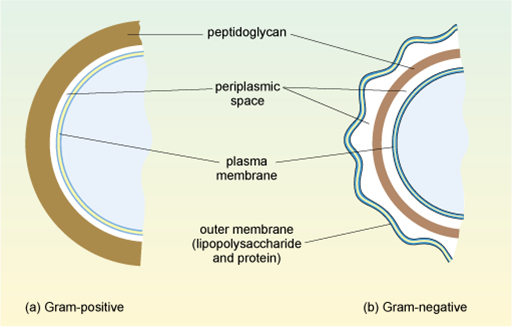4.1 Gram-positive and Gram-negative bacteria
Bacteria are divided into two groups based on how the cell wall appears when they are stained using
In
In
This second, outer membrane of Gram-negative bacteria is an effective barrier, regulating the passage of large molecules such as antibiotics into the cell. In contrast, the thick, porous peptidoglycan layer in the cell wall of Gram-positive bacteria gives greater access to antibiotics, allowing them to more easily penetrate the cell and/or interact with the peptidoglycan itself.
You will learn more about the strategies antibiotics use to cross the cell wall in Week 3.

